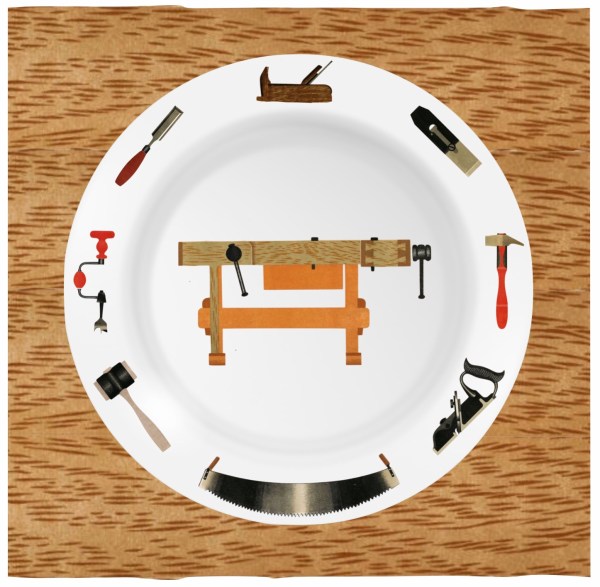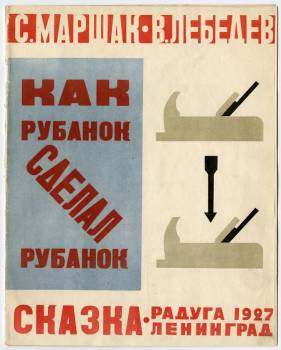
Both books are from the Special Collections of the University of Washington Library. Although the page count is low, only 9-12 pages each, the illustrations pack a punch and you don’t have to read Russian to understand the stories.

The illustrations are by Evgeniia Konstantinova Evenbahk and are in a style and palette pioneered by the illustrator of the next book.
The UW Library site allows for easy downloading or printing. You can find “Table” here.
The second book is a fairy tale about an old handplane realizing it is time to retire.

The title of this 1927 book translates as “How a Plane Made a Plane: A Fairytale.” The author is writer and poet, Samuil Marshak, considered to be the founder of Russian children’s literature. He was championed by Maxim Gorky. Marshak and the illustrator, Vladimir Lebedev, worked on several books together.
In the 1920s Lebedev became known as “the king of the children’s book.” He introduced bright colors and graphic design and changed how children’s literature was designed. He also brought his bold designs to agiprop posters he was commissioned to design.
The book is written as a poem. An old handplane rises early, begins his work and realizes he can no longer do his job very well. He asks his friends, the other tools, to help him make a new plane, his “grandson.”
You can find “How a Plane Made a Plane: A Fairytale” here.
-Suzanne Ellison



Deux livres qui font du Bien ! Merci Suzanne. Une petite vidéo qui me fait toujours du Bien (et depuis longtemps) : Crac ! de Frédéric Back: https://www.dailymotion.com/video/x57ozu6
La vidéo est marveilleuse! Merci!
Charming! This drawing style was quite popular in children’s books in Israel – I used to think that was a particular influence of the Russian-born immigrants, but according to this post, it seems that the style became popular worldwide.
I especially liked the depiction of the wood grain, it is amazingly accurate yet stylized.
I can’t be the only person thinking how cool it would be for Lost Art Press to publish English translations of these books?
Agree. Would compliment Grandpa’s Workshop really well. My son is just about two, so if you start the project now he’ll be just the right age when they are published! Hurry!
I’d also appreciate it if it was possible to publish a translated version, even if only in digital format.
This is really great!
Beautiful artwork. And so clear and concise.
(Hammer angles might be corrected for making the plane.)
Thanks for sharing.